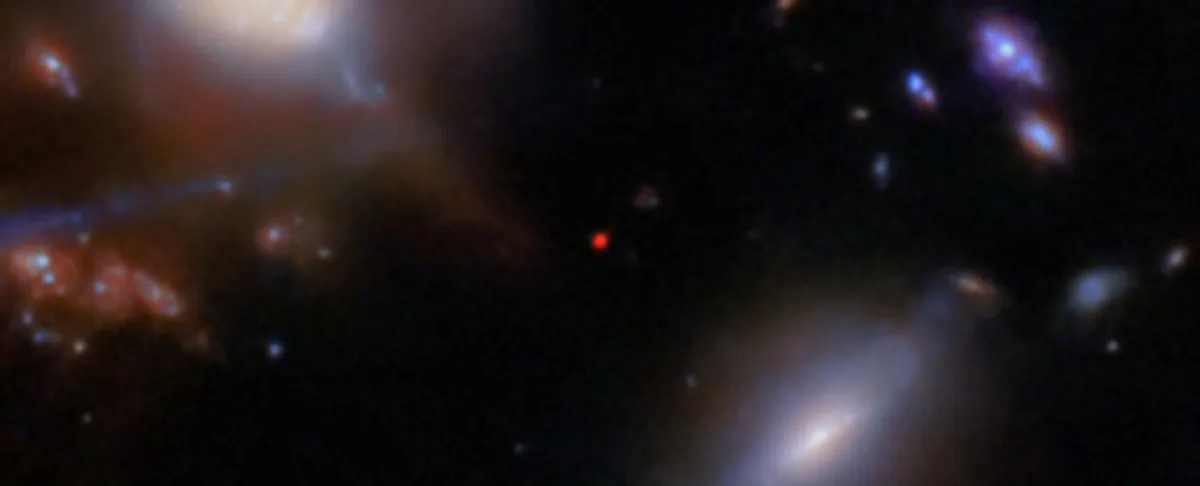
A remarkable galaxy, named JADES-GS-z13-1, has been observed just 330 million years after the Big Bang, and it is believed to have played a significant role in illuminating the dark epochs of the early Universe. This galaxy emits a very faint light that has traveled for over 13.4 billion years, helping scientists understand the Epoch of Reionization—a crucial period that cleared the dense fog that engulfed the early Universe, allowing light to traverse freely.
The Epoch of Reionization represents a billion-year timeline during which the Universe transitioned from a dark, opaque state to one filled with light. This epoch is notoriously challenging to study, and the mechanisms underlying it remain somewhat enigmatic. JADES-GS-z13-1 is pivotal in shedding light on this cosmic darkness. The galaxy emits a distinctive signature known as Lyman-alpha, a spectral line produced by hydrogen as it shifts energy states, observable only after reionization occurs.
Astrophysicist Roberto Maiolino from the University of Cambridge and University College London explains that the early Universe was enveloped in a thick haze of neutral hydrogen. The majority of this haze was dissipated through reionization, which was completed approximately one billion years post-Big Bang. JADES-GS-z13-1, observed when the Universe was merely 330 million years old, astonishingly exhibits a clear Lyman-alpha emission signature, indicating that the surrounding fog had largely cleared, contrary to expectations based on early galaxy formation theories.
In the initial moments of the Universe, immediately following the Big Bang, space was filled with a hot, dense fog of plasma made up of atomic nuclei and free electrons. Light struggled to penetrate this fog, as photons scattered off the abundant electrons, rendering the Universe dark. After about 300,000 years, as the Universe cooled, protons and electrons began to coalesce, forming neutral hydrogen and helium gas. While light could penetrate this neutral medium, there was little light to be found.
However, from this primordial hydrogen and helium, the first stars and galaxies emerged. These early light sources emitted intense radiation, stripping electrons from neutral hydrogen and reverting it to an ionized state. By this time, the Universe had expanded significantly, allowing light to flow more freely, ultimately leading to a transparent Universe about a billion years after the Big Bang—marking the end of the Cosmic Dawn.
Despite its role in reionization, detecting JADES-GS-z13-1 was unexpected. The area surrounding the galaxy would have been ionized, creating a clarity bubble spanning roughly 650,000 light-years. Yet, fog should still cloak this region, making the galaxy's brightness surprising to astronomers. Kevin Hainline, an astronomer at the University of Arizona, notes that the early Universe was shrouded in an immense fog, complicating the visibility of even the most luminous galaxies. Yet, the light from JADES-GS-z13-1 pierces through this veil.
This fascinating emission line from JADES-GS-z13-1 holds significant implications for our understanding of the reionization process. Previous models of reionization suggested a clearer timeline, but this discovery challenges those assumptions. One potential explanation for the galaxy’s brightness could be a rapidly growing black hole, igniting its surroundings with intense light. Alternatively, the presence of numerous massive stars, each weighing between 100 to 300 times the mass of the Sun, may also account for the brightness.
Both hypotheses provide exciting avenues for exploration, each offering unique insights into the infancy of the Universe. Future observations are planned to delve deeper into the enigmatic nature of JADES-GS-z13-1, as researchers strive to uncover more about its role in cosmic history.
As we further investigate the early Universe, the complexities continue to unfold. Peter Jakobsen, an astronomer from the University of Copenhagen, emphasizes that while the James Webb Space Telescope has proven capable of discovering increasingly distant galaxies, the revelations it brings—like those of JADES-GS-z13-1—often surprise astronomers with new insights into the formation of stars and black holes at the very dawn of cosmic time.